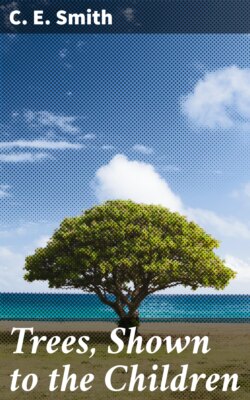Читать книгу Trees, Shown to the Children - C. E. Smith - Страница 11
PLATE II
THE BEECH
ОглавлениеIn the south of England there lived a holy hermit named St. Leonard whose hut was surrounded by a glade of noble Beech trees. The saint loved the beautiful trees, but by day he could not sit under their shady branches because of the vipers which swarmed about the roots, and by night the songs of many nightingales disturbed his rest. So he prayed that both the serpents and the birds might be taken away, and from that day no viper has stung and no nightingale has warbled in the Hampshire forests. So we read in the old story books. There are many such legends connected with the Beech tree. It has grown in this country as far back as we have any history, and it is often called the mother of the forest, because its thickly covered branches give shelter and protection to younger trees which are struggling to live.
The Beech is a cousin of the Oak. It is a large, handsome tree, with a noble trunk and widely spreading branches which sweep downward to the ground, and in summer every branch and twig is densely covered with leaves. No other tree gives such shade as the Beech, and in a hot summer day how tempting it is to lie underneath the branches and watch the squirrels glancing in and out among the rustling leaves and tearing the young bark.
In early spring you will recognise the Beech tree (1) by its smooth olive-grey trunk. Only the Beech tree has such a smooth trunk when it is fully grown, and in consequence, every boy with a new knife tries to cut his name on its bark. In summer the young bud (3) of next year’s leaf is formed where each leaf joins the stem. All winter time you can see slender-pointed buds (4) growing at the end of every twig, and when April comes each of these pointed buds has become a loose bunch of silky brown scales. Inside these protecting scales is hidden the young leaf bud, and soon the winter coverings unclose. For a short time they hang like a fringe round the base of the leaf stalk, but they quickly fall off and strew the ground beneath. The young leaves inside are folded like a fan, and they have soft silky hairs along the edges. How lovely they are when open! Each leaf (2) is oval, with a blunted point at the end, and the edges are slightly waved.
At first the leaf colour is a clear pale green, through which the light seems to shine; and there is nothing more lovely than a Beech tree wood in early May when the young leaves are glistening against the clear blue sky. But as summer comes nearer the leaf colour darkens, and by July it is a deep, glossy green. You can then see very distinctly the veins which run from the centre to the edge of every leaf. These leaves grow so thickly that no stems or branches can be seen when the tree is in full foliage; and they are beautiful at all seasons. When autumn comes, bringing cold winds and a touch of frost, then the Beech tree leaves change colour: they seem to give us back again all the sunshine they have been storing up during summer, for they blaze like the sunset sky in myriad shades of gold, and red, and orange. In windy open places, these beautiful leaves soon strew the ground with a thick carpet that whirls and rustles in every breeze. But in sheltered glades, and especially in hedges, the leaves will hang all winter till they are pushed off by the new spring buds, and they glow russet red in the December sunshine, like the breast of the robin that is singing on the twig.
At every stage the Beech tree is a thing of beauty, and it is one of England’s most precious possessions.
The young flowers appear about the same time as the leaves, and, like many other trees, the Beech has two kinds of flowers. The stamen flower (6) has a long, drooping stalk, from the end of which hangs a loose covering of fine brown scales, with pointed ends. Beyond this scaly covering hangs a tassel of purplish brown stamens, eight or twelve, or more, each with a yellow head.
On the same twig, not very far distant, you find the seed flower (5). This grows upright on a short stout stalk which bears at the end a bristly oval ball (7). At the top of this bristly ball you see six slender threads waving in the air. These rise from two seeds which are enclosed in the bristly covering. By and by the ball opens at the top and forms a cup with four prickly brown sides, each lined with silky green down. Inside the cup are two triangular green nuts which are the fruit (8). These nuts become dark brown when they ripen, and on windy days they are blown in thousands from their coverings and fall to the ground, where they lie hidden among the rustling brown leaves.
